Bird feeding is an inexpensive hobby if you keep it simple. But, if you’re like me…filling up multiple feeders several times a week can add up. Add in inflation woes and it can be challenging to keep your feeders full for our bird friends.
I’ve compiled a list of cost-saving bird feeding measures below. Each of these tips shouldn’t take away from the quality and amount of birds that regularly visit your feeders. Why should you listen to me? I’ve been feeding birds regularly for three years and have experimented with dozens of different bird seeds and feeders with this blog. My hope is that you can skim through this story to pick a few techniques that will save you money in the long-run with this hobby. It’s rewarding to feed birds, but it doesn’t have to cost a fortune.
Related Content: Cardinals Love this Dirt Cheap Bird Seed
Disclaimer: Some links found on this page are Amazon affiliate links. If you click an affiliate link and make a purchase, I might earn a commission. As an Amazon Associate I earn from qualifying purchases.
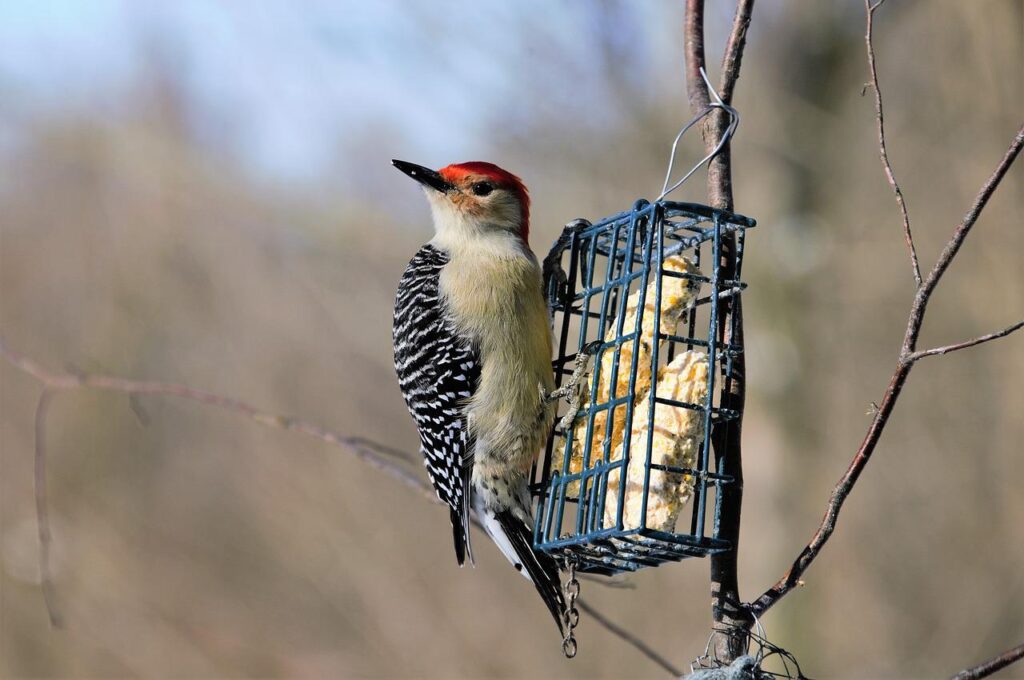
1. Buy Bird Feeding Supplies From Hardware Stores or Home Improvement Retailers
It’s tough to beat the ease of buying stuff from Amazon and other online retailers. I do it often. But the convenience of ordering online (plus shipping costs) means you’ll be paying more compared to going to a store in-person.
I find the best bang for my buck to be at my local Ace Hardware store or home improvement retailer. Keep an eye out for sales and coupons. I signed up for rewards at my local hardware store and they send me coupons every month that save me $5 to $20 per month. It adds up!
Menards stores in the Midwest is tough to beat for bird seed prices. You can also find some good seed and deals at Home Depot.
Another economical option for birdseed is at Costco. A 30-pound bag of sunflower blend is typically around $25-$35 (I’ve seen it on sale too). That’s the best value I’ve seen! I almost always have a bag of it on hand.
Related Content: Costco Bird Seed is a Hit for Cardinals, Finches, Jays
2. Try the “Breakfast Bell Trick” for Bird Feeding
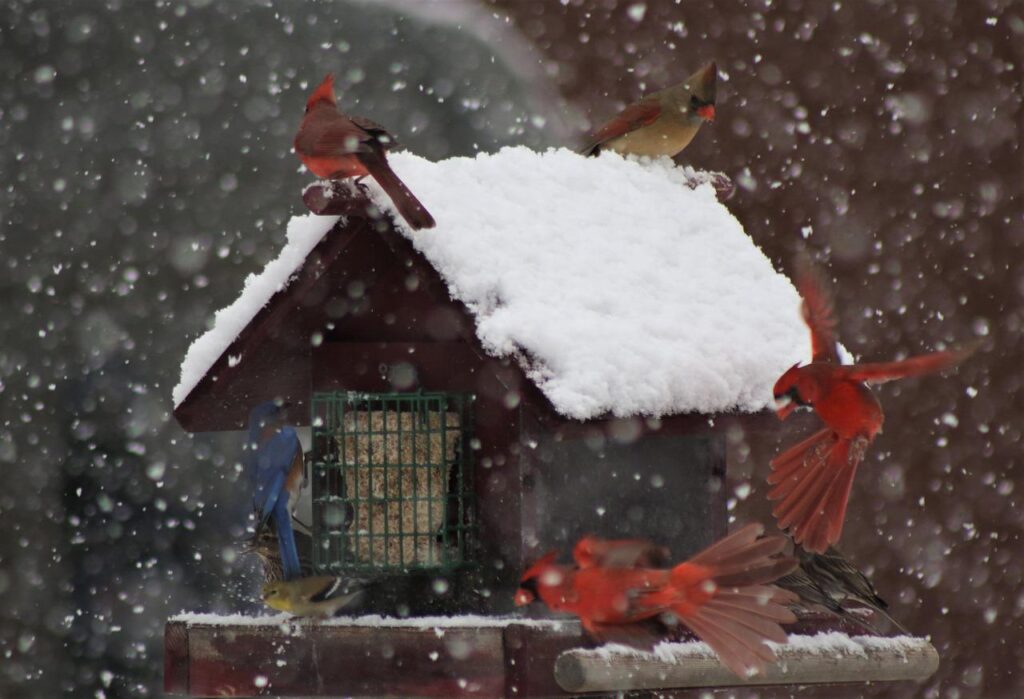
Want to only put out a certain amount of bird seed you can afford? Put it out at the same time each morning! Even if the birds empty your feeders before the next day, they will quickly learn the timing and will flock to it at your regularly scheduled time each day. Birds are creatures of habit when it comes to their meals, just like us.
3. Buy Black Oil Sunflower Seed and White Millet
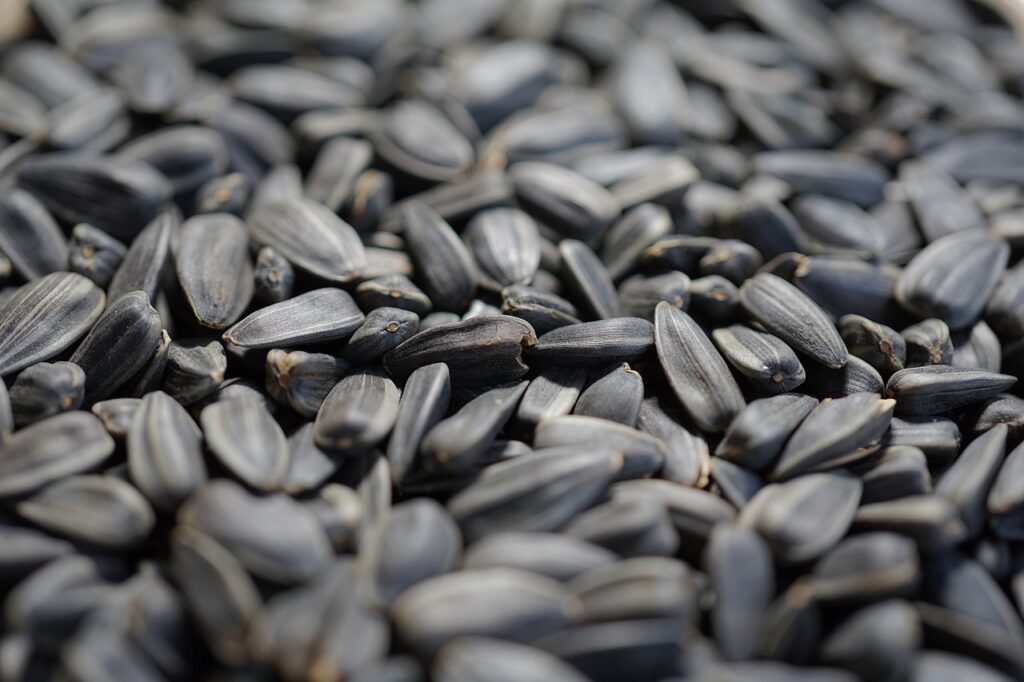
Black oil sunflower seed and white millet are the two cheapest quality bird seeds that draw in the widest variety of birds. Stock up in bulk on these seeds. Keep any eye out for sales! So long as you keep your seed dry, you can buy a lot and store it to be set on bird seed for a long time.
Here are the birds that regularly like eating black oil sunflower seed:
-Blue Jays
-Cardinals
-Chickadees
-Finches
-Grosbeaks
-Magpies
-Nuthatches
-Pine Siskins
-Red-Bellied Woodpeckers
-Redpolls
-Titmice
Here are the birds that regularly like eating white millet:
-Indigo Bunting
-Juncos
-Mourning Doves
-Red-Winged Blackbirds
-Sparrows
Related Content: Ranking Bird Seeds from Worst to Best
4. Buy Suet Cakes
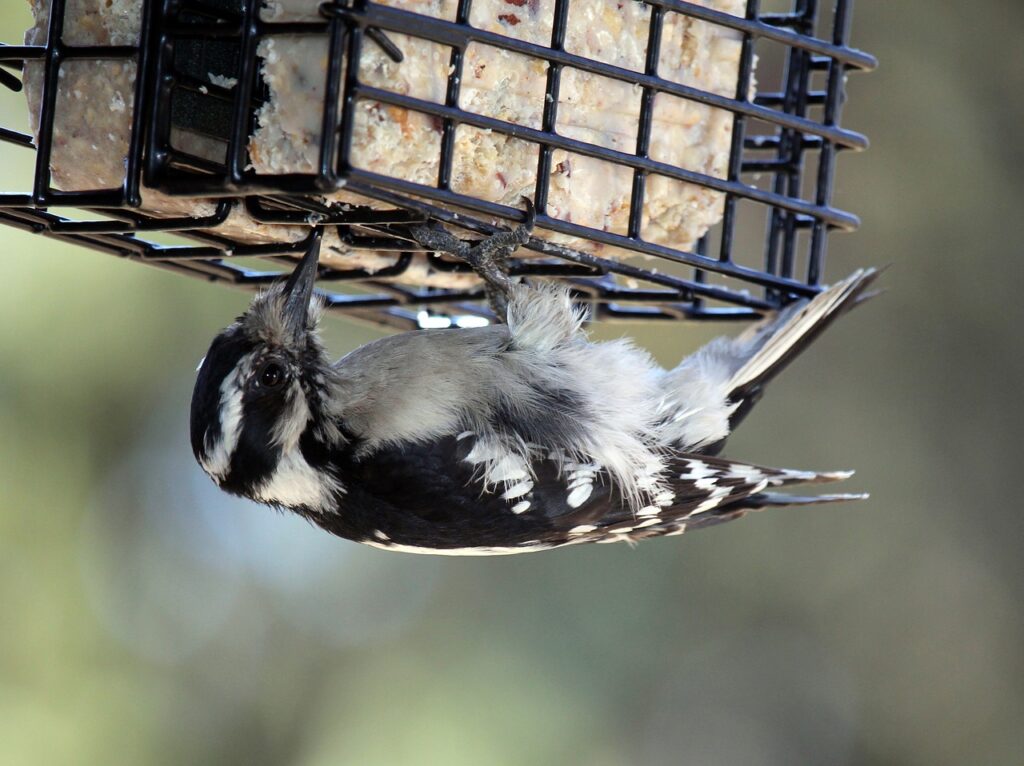
Suet is dirt cheap and attracts a ton of awesome Woodpeckers and Nuthatches to your yard. A suet cake will run you between $1 to $4 You can also buy a suet cake feeder for a couple bucks. Boom! That’s easy and cheap bird feeding.
In a similar vein, if you have leftover peanut butter you’re looking to get rid of, you can apply it to a suet feeder for birds! Birds love this high-fat treat, especially in the winter when they need as many calories as possible.
5. Avoid Bird Seeds With Fillers Like Milo, Cracked Corn, and Oats

When you go to buy bird seed you’ll see bags that are significantly cheaper than the rest. Before you jump to buy it, recognize that this is usually a red flag. Often the cheapest bird feed is chock full of filler ingredients, specifically red milo, cracked corn, and oats.
Most birds (except sparrows, pheasants and pigeons) won’t eat these ingredients and will toss them to the ground, which can lead to unwanted weeds/sprouting. Save your money and buy one of the seed suggestions above instead! They may be more expensive, but it’s worth it in the long run.
6. Don’t Forget the Magic of Water
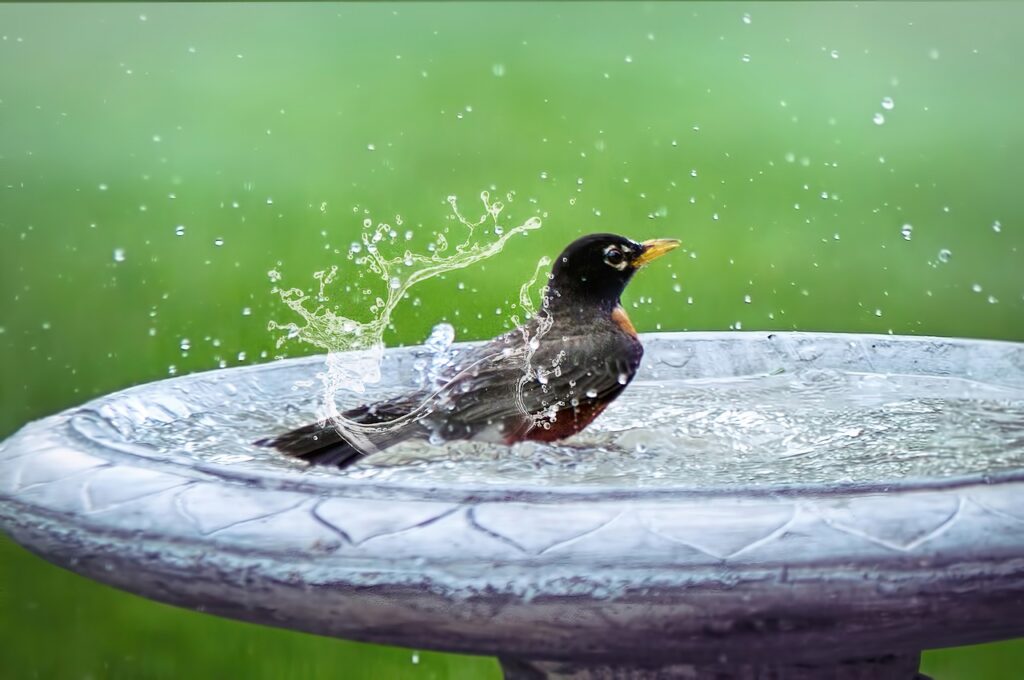
All birds need water. Having a water source in your yard is a cheap and easy way to bring them to your yard consistently. Buying a bird bath is a quick one time cost for regular bird guests. Some bird species like Robins and Cedar Waxwings don’t regularly visit bird feeders, but they’ll gladly stop by a bird bath.
If you live in an area with harsh winters like I do, a heated bird bath is especially welcome by Cardinals when it’s cold out and open water is hard to come by. Your local bird store will have a variety of bird baths for sale and can give you pointers on which one to pick out for your yard.
7. Buy Squirrel-Proof Bird Feeders
This may seem counterintuitive as squirrel-proof feeders are more expensive versus regular bird feeders. BUT, if you’re in an area (pretty much anywhere) where squirrels are harassing your feeders and eating a bunch of bird seed, this is a good up-front investment to save money long-term.
Squirrels can eat through a good sized bag of bird seed every week if you let them. That’s why I have a couple of squirrel proof feeders to keep them away. I love the feeder linked below. So far, it hasn’t allowed a single squirrel to eat from it. Any hardware or retail store with bird feeding equipment will also have several squirrel-proof options for sale. Don’t try to be cheap here. It’s best to buy a quality-made squirrel-proof feeder.
Squirrel Buster Legacy Squirrel-proof Bird Feeder w/4 Metal Perches, 2.6-pound Seed Capacity
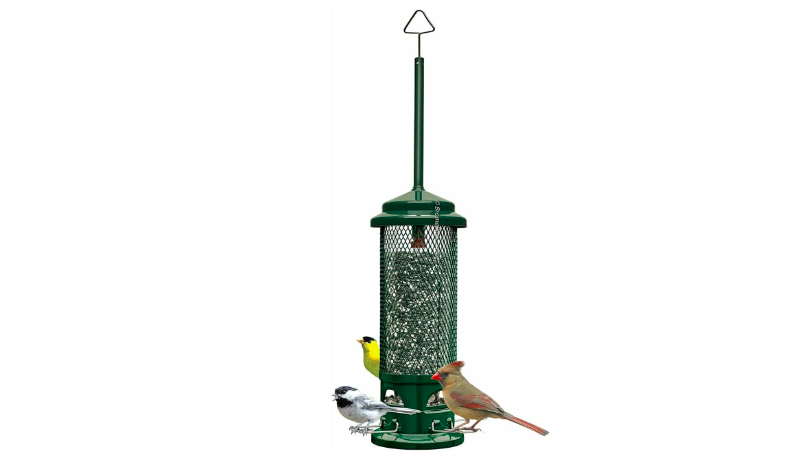
If you enjoy feeding the squirrels, my penny-pinching tip for you is to invest in big bags of corn kernels and put them in a separate ground feeder away from your bird feeders. This is a good way to feed critters without breaking the bank. As a bonus, birds like Cardinals, Jays and Ducks also love corn. You may get some surprise visitors!
8. Slow Down Starlings
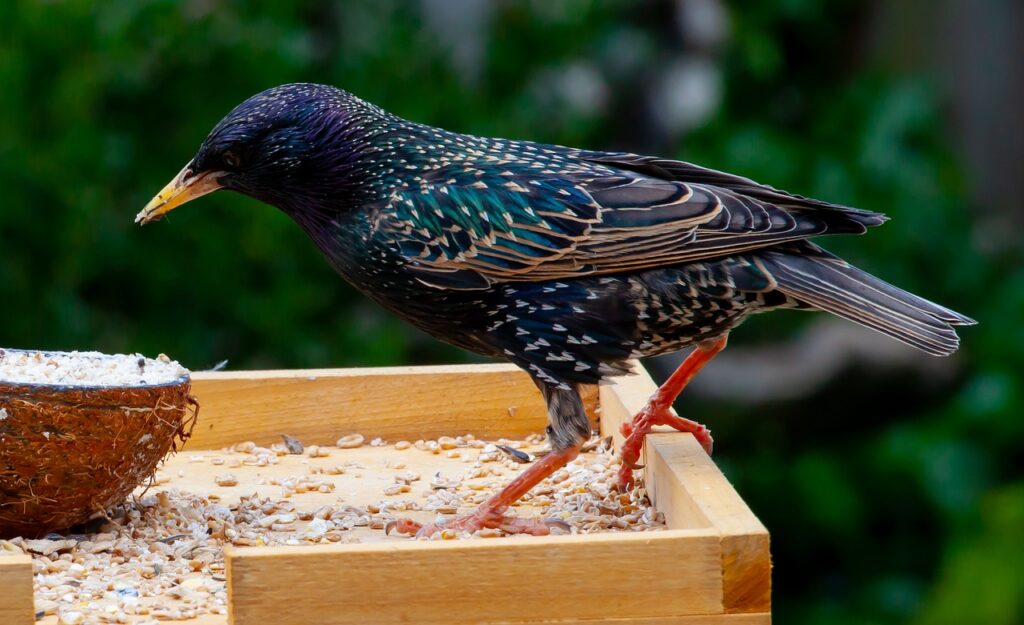
Most bird feeders will have to deal with European Starlings from time to time. These birds can be neat visitors with unique colors and calls, but they usually arrive in large groups and act aggressive at feeders, all while eating up as much food as possible. They can drain your wallet just as quickly as squirrels!
It’s nearly impossible to deter Starlings at bird feeders completely, but you can slow them down and save your money! The first is through upside-down suet feeders. Starlings love to eat suet, but they’re larger birds and have difficultly hanging upside-down on a feeder versus Woodpeckers and Chickadees. This is a great investment if they’re swarming your feeders.
Nature’s Way Cedar Suet Upside-Down Bird Feeder
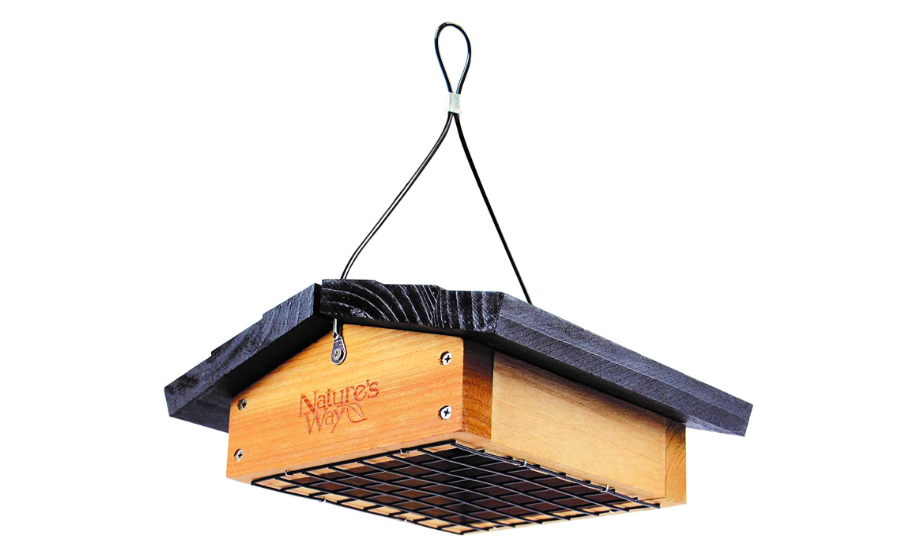
A second technique to slow down Starlings is to offer foods they don’t like or are more difficult to eat. Starlings tend to avoid eating safflower. My local Wild Bird Store also sells a “Bye Bye Starlings” mix full of harder to crack seeds. Starlings have long, narrow beaks, making it harder for them to crack into seeds like striped sunflower seed.
I hope these tips were helpful for you and will help you save some cash during this time of tough inflation. Remember, a small adjustment or two can work wonders! Your birds won’t mind if you have to cut back. A little bird seed can go a long way as a supplement to their regular diets.
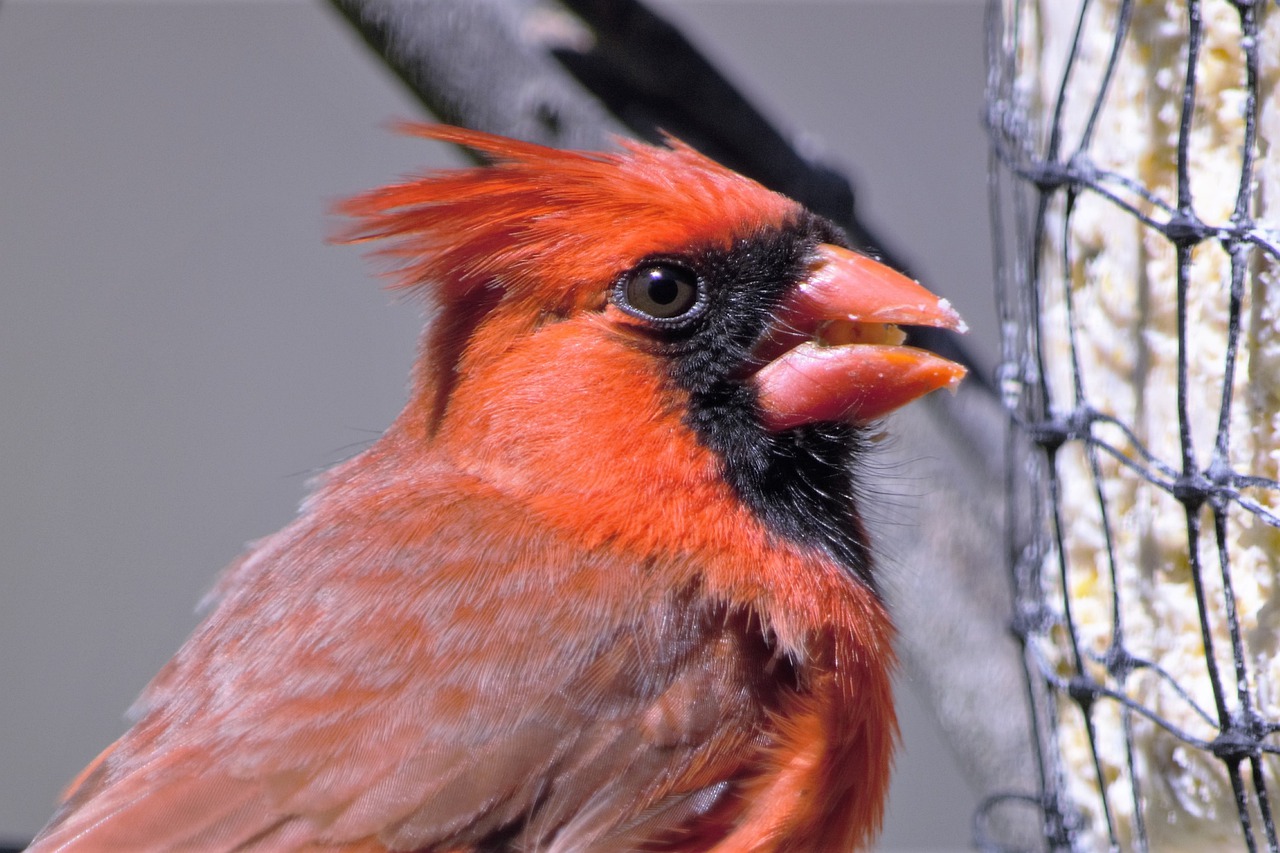
Pingback:Three Easy Late Fall Bird Feeding Tips (Photos and Video) - BIRD BITES
Pingback:Should I Feed Birds Bread? Everything You Need to Know - BIRD BITES
Pingback:How to Attract 15 Alaska Birds to Your Feeders - BIRD BITES
Pingback:Review: A Cheap Bird Seed Cardinals Will Love - BIRD BITES
Pingback:Five Heated Bird Baths to try in the Winter - BIRD BITES
Pingback:Is a $150 Bird Feeder Worth it? Reviewing the Squirrel-Proof Droll Yankee Flipper - BIRD BITES